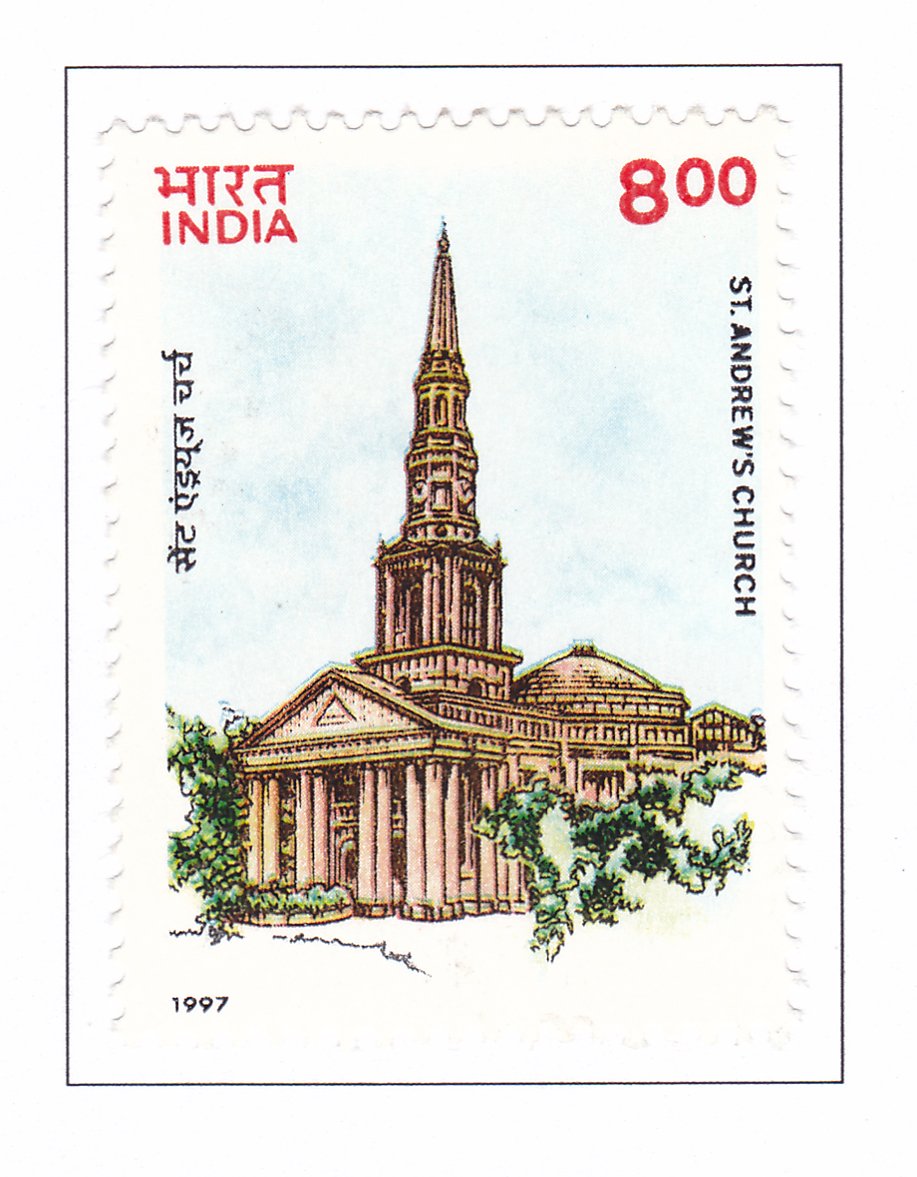St. Andrew’s Church, Egmore, Madras

Technical Data
| Date of Issue | February 25, 1997 |
|---|---|
| Denomination | Rs. 8 |
| Quantity | 700,000 |
| Perforation | comb 13 x 13¼ |
| Printer | Security Printing Press, Nashik |
| Watermark | No Watermark |
| Colors | Multicolor |
| Catalog Codes |
Michel IN 1537 Stamp Number IN 1603 Yvert et Tellier IN 1307 Stanley Gibbons IN 1701 |
| Themes | Churches-Cathedrals-Basilicas-Chapels | Commemoration |
Table of Contents
Commemorative Stamp Set: St. Andrew’s Church (The Kirk), Egmore, Madras
Design Elements:
The commemorative stamp would highlight the stunning neo-classical architecture of St. Andrew’s Church, also known as “The Kirk,” located in Egmore, Madras. The stamp design could feature the church’s imposing exterior with its perfect symmetry and soaring spire, capturing the grandeur of its Georgian Church Architecture. The church’s iconic steeple, which stands taller than that of St. Martin-in-the-Fields in London, could be prominently displayed against a background that subtly showcases the lapis lazuli-colored dome interior, symbolizing the illusion of an azure sky.
Cultural and Historical Significance:
St. Andrew’s Church, consecrated on February 25, 1821, is a remarkable example of neo-classical architecture in India. Modeled after St. Martin-in-the-Fields in London, the church is a testament to the Scottish influence in Madras during the British colonial period. The church’s foundation, built on 150 brick and pottery wells, reflects the innovative construction techniques of the time. Over the years, St. Andrew’s Church has evolved from serving the Scottish community to being an integral part of the Indian Christian community, contributing significantly to social causes and the promotion of music and education. The church’s connection to the founding of Madras Christian College adds to its historical importance.
Usage:
This stamp set would be used for postal correspondence both within India and internationally, particularly appealing to those interested in architecture, history, and cultural heritage. It would also attract philatelists, architects, historians, and the Christian community.
Importance of the Commemorative Stamp Set:
Issuing a commemorative stamp for St. Andrew’s Church recognizes its architectural significance and historical contributions. It celebrates the church’s enduring legacy, not only as a place of worship but also as a center for education, music, and social work. The stamp set honors the church’s role in the cultural and social fabric of Madras, making it an important symbol of the city’s rich heritage.
Example of the Stamp Design:
The stamp might feature a detailed illustration of St. Andrew’s Church, with its towering spire and fluted Corinthian columns in the foreground. The background could include a soft depiction of the interior dome with its lapis lazuli-colored stucco, adding depth and a sense of the church’s majestic interior. The stamp could use a color palette that reflects the church’s architectural elements, such as soft blues and whites, with the church’s name and the date of consecration elegantly inscribed.
Significance:
The commemorative stamp set celebrates St. Andrew’s Church as an architectural marvel and a historical landmark in Madras. It acknowledges the church’s contributions to the community, from its role in establishing Madras Christian College to its ongoing social and educational programs. This stamp serves as a tribute to the church’s legacy, highlighting its importance in India’s cultural and religious history.
